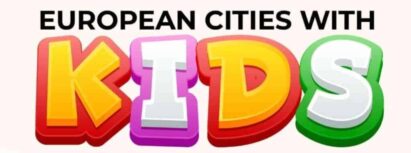Switzerland, or, as it’s officially called, the Swiss Confederation, is a European country known for many things, from its Swiss chocolate to its wartime neutrality to the beauty of the famous Swiss Alps mountain range. These Switzerland facts for kids cover some of the most interesting facts about Switzerland to impress your friends and family!
This post may contain affiliate links, which means I may receive a commission, at no extra cost to you if you make a purchase through a link. Please see my full disclosure for further information.

Switzerland Fact File
These Switzerland facts are some interesting facts about the country as a whole, from the flag of Switzerland to its population to its official names and languages. They call it the world’s most neutral country – and here’s why!
1. Switzerland has four official languages; German, French Italian, and Romansh, the last of which is a purely regional language mostly spoken in one of its 26 cantons. Swiss German is the majority language.
2. The country has more than one official name – in fact, it has five! Its English name is the Swiss Confederation. In German, it is Schweizerische Eidgenossenschaft, while in French, it is Confédération Suisse. Switzerland’s Italian name is Confederazione Svizzera, while Romansh-speaking people in Switzerland call it Confederaziun svizra. Finally, the country’s Latin name is Confoederatio Helvetica.
3. The Swiss flag is one of the only two square flag shapes of sovereign states globally; the other square flag belongs to the Vatican City. The Swiss flag is a red square with a small vertical white cross in the centre. The cross on the flag of Switzerland is based on a Christian cross.
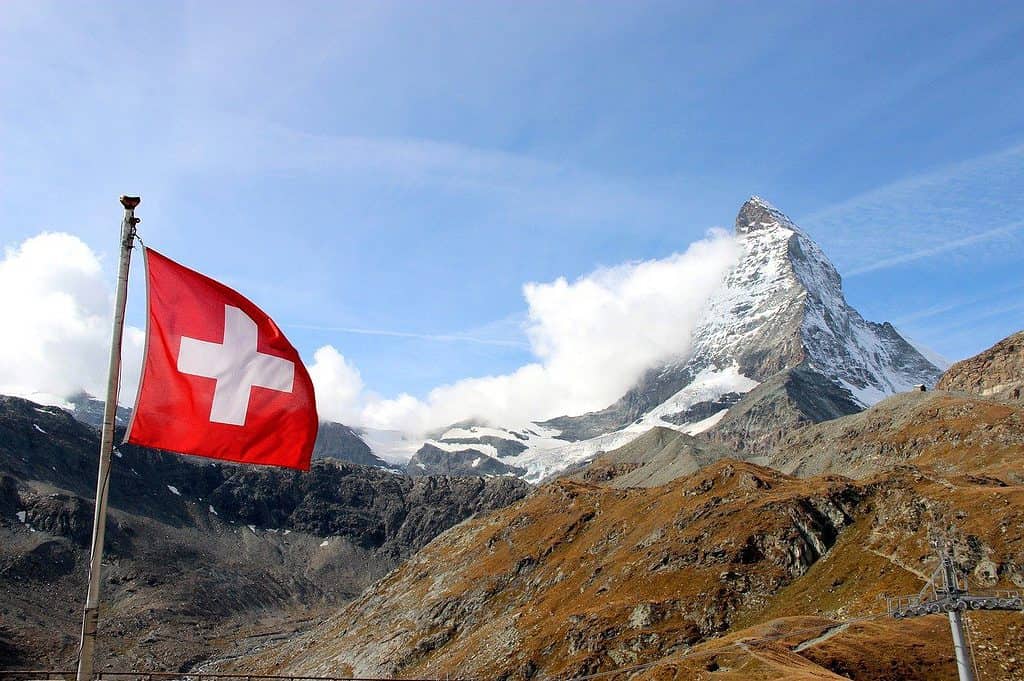
4. The largest city in Switzerland is Zürich, which is also the canton’s capital with the same name. Switzerland is a federal republic made up of 26 cantons, each of which has its own capital city, which is often also the largest city in the cantons. The cantons and their capital cities are:
- Zürich (Zürich)
- Bern / Berne (Bern / Berne – this is also the overall capital of Switzerland.)
- Luzerne (Lucerne)
- Uri (Altdorf)
- Schwyz (Schwyz)
- Obwalden (Sarnen)
- Nidwalden (Sans)
- Glarus (Glarus / Glaris)
- Zug (Zoug / Zug)
- Fribourg / Freiburg (Friburg / Fribourg)
- Solothurn (Soleure / Solothurn)
- Basel-Stadt (Basle / Basel)
- Basel-Landschaft (Liestal)
- Schaffhausen (Schaffhouse / Schaffhausen)
- Appenzell Ausserrhoden (Herisau [parliament] and Trogen [judicial])
- Appenzell Innerrhoden (Appenzell)
- St. Gallen (St. Gallen)
- Graubünden / Grischun / Grigioni (Chur)
- Aargau (Aarau)
- Thurgau (Fraunfeld and Weinfelden [half year parliament])
- Ticino (Bellinzona)
- Vaude (Lausanne)
- Valais / Wallis (Sion)
- Neuchâtel (Neuchâtel)
- Genève (Geneva)
- Jura (Delémont)
5. The Swiss military hasn’t engaged in a world conflict since 1815, as they are firmly a neutral country when it comes to warfare. Their military will not get involved in any conflicts between the military battles of other countries. However, Switzerland is one of the countries most highly involved in the world’s humanitarian and peacemaking efforts, as it is the birthplace of the Red Cross. The Red Cross is one of the world’s longest operating humanitarian organisations.

6. Switzerland’s currency is the Swiss Franc, which it shares with Liechtenstein. The Swiss Franc is also legal tender in the Italian exclave known as Campione d’Italia, which, although belonging to Italy, is actually surrounded by Switzerland’s canton, Ticino.

7. Switzerland is a landlocked country with no access to the sea. Its border countries include Germany, Austria, Liechtenstein, France and Italy. Because of this, German, French and Italian are spoken in regions closest to those countries’ borders. Germany and Austria Liechtenstein are north and east, while France and Italy are to the south and west.
8. The country is considered to be in Central Europe but is actually at the point where central, western, and southern Europe meet. It’s not part of the European Union, but Switzerland is one of the countries that founded the European Free Trade Association.
9. Nearly nine million people live in Switzerland. Some of the most famous Swiss people to ever live in Switzerland include Albert Einstein (though he was born in Germany) and Carl Gustav Jung.
10. Switzerland is the world’s richest country per adult in terms of nominal wealth. It also has the world’s eighth highest GDP.
11. Switzerland is located right by the Alps mountain range, and the mountains of the Swiss Alps are a very strong image associated with the land and its lakes. The Matterhorn (or, as it should be called, Cervino or Cervin crosses the border between Switzerland and Italy. The pyramid-shaped mountain of the Matterhorn is one of the most famous mountains in the Alps and a national point of pride and a national natural monument.

12. There are around one and a half thousand major lakes in Switzerland, with smaller lakes bringing the number up to as many as seven thousand! Lake Geneva and Lake Constance are the two biggest of these, and Lake Geneva is probably the most famous. Lake Geneva measures seventy-two million acre-feet, while Lake Constance is thirty-nine million acre-feet. These lakes together with the mountains, make up most of the image of the land around the world.

13. The neutral stance of Switzerland means that they host many of the world’s most significant official organisations, including the World Health Organisation (WHO) and other United Nations groups.
14. There are several traditional sports in Switzerland. These include Swiss wrestling (Schwingen) and Steinstossen, a kind of shot-put practised by the mountain population of the Alps. Modern Swiss life also follows many sports and has several national champions, including the tennis player Roger Federer. Motorsports, ice hockey, and football are also a big part of Swiss life. Of course, Swiss people have the biggest preference for winter sports due to their presence in the mountains – skiing, snowboarding, and mountaineering are all very popular sports.
15. Though Switzerland was actually the very last Western Republic to grant women voting rights at a federal level, in 1971, women quickly became significant in politics. The first female president, Ruth Dreifuss, was elected in 1999. Of the current seven members of the federal council, three are women: Simonetta Sommaruga, Viola Amherd, and Karin Keller-Sutter.
Fun Facts About Switzerland
These Switzerland facts are some of the most fun we have for kids! These fun Swiss facts are great for kids everywhere from nuclear organisations to Switzerland’s image and history.
16. Solid milk chocolate was first invented in Switzerland by a famous Swiss man named Daniel Peter, who was a neighbour of Henry Nestlé! Swiss chocolate is among the most highly rated worldwide and often is packaged with pictures of the mountains and lakes of Switzerland to show where its origins are located – the chocolate is a matter of national pride!

17. In 1882, when it was first opened, the Gotthard tunnel was the world’s longest railway tunnel. The tunnel was built to make it easier to travel between different European countries and is located among the Swiss Alps.
18. The World Wide Web is Switzerland’s baby! It was created at the European Organization for Nuclear Research (CERN) headquarters. Nowadays, CERN is known for the LHC tunnel, which houses the Large Hadron Collider, the world’s largest particle collider.
19. Swiss federalism occurred because of a search for Swiss national identity. It was and is important to the population to allow the German, Italian, French, and other cultures to thrive while also combining Switzerland’s people with a shared history and value system. Alpine symbolism is the biggest image of Swiss unity.
20. There are more than a thousand museums in Switzerland! Many creative people live and have lived there, coming from all over Europe. The big Switzerland cities especially are known for their famous art, literature, and music. Many famous cultural events include the Paléo Festival, the Lucerne Festival, the Montreux Jazz Festival, the Locarno International Film Festival, and the Art Basel.
21. Switzerland has the densest railway system in Europe! Many of the tunnel systems that make up the train routes go directly through the mountains and connect to France and cities throughout Europe.
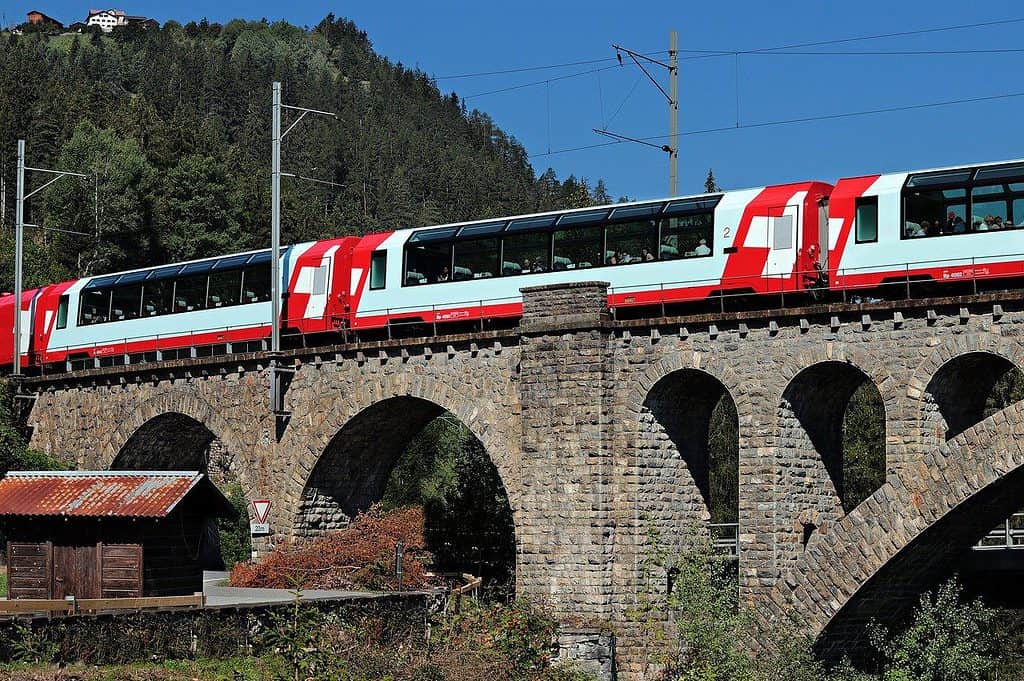
22. Swiss people consume more chocolate than any other nation globally. The average Swiss person eats 8.8kg of chocolate per year – and Toblerone chocolate, in particular, is very popular. German people and Austrian people are also very fond of chocolate, consuming 7.9kg and 8.1kg respectively.

23. On average, the Swiss population have children later than in other countries. The average age for marriage is 31.8 for men and 29.5 for women, which is fairly standard for developed countries these days, but the average age for a woman having a first child is 30.4 – the oldest in Europe and second oldest in the world!
24. Despite all the chocolate, Switzerland is one of the least obese populations in the world. Around 19.5% of the population are obese, placing it as the 79th least obese of 191 countries. By comparison, 36.2% of Americans and 27.8% of British people are obese.
25. According to WHO, Swiss people have the highest life expectancy of any other country except Japan. The average life expectancy is 83.4, with men on average living to 81.8 and women to 85.1.
26. Though the Alps are a symbol of Switzerland around the world, one of the most interesting fun facts about the country is that only 15% of the total mountain range is actually in Switzerland!
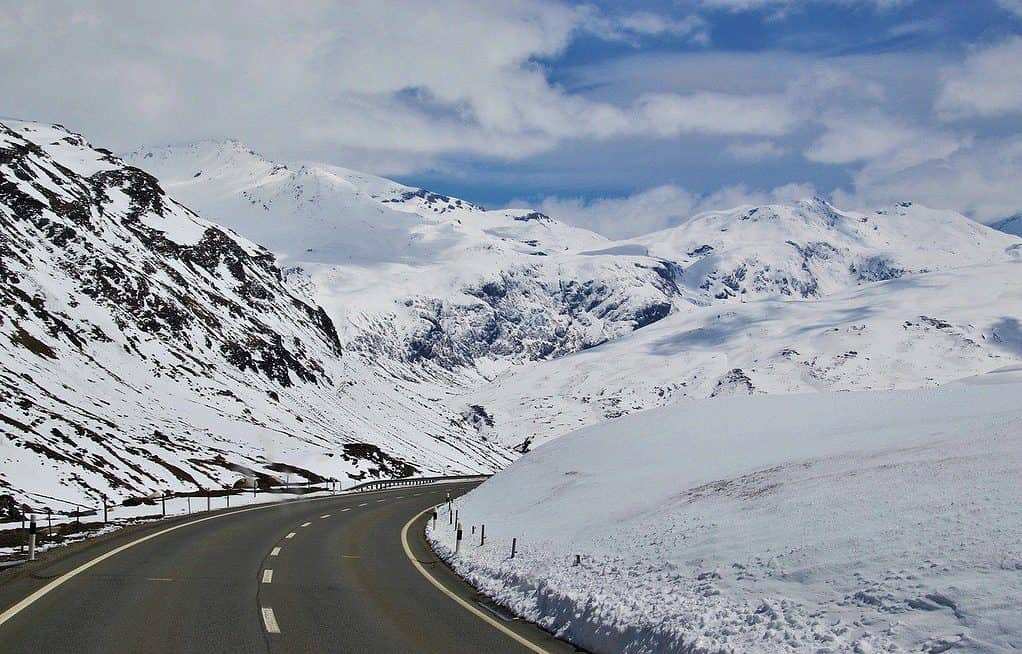
Switzerland Interesting Facts
27. 40% of Swiss electricity comes from nuclear power. There are four reactors in the country. However, as of 2011, a plan has been put in place to phase out nuclear power entirely to make use of Switzerland’s renewable resources, following trends in Europe.

28. Swiss workers enjoy the fourth-highest average salary in the world, higher than the USA but lower than Norway, the United Arab Emirates, and Luxembourg, the last of which comes out on top.
29. Half of the watches in the world are of Swiss origin! The country is known for companies like Swatch, which make high-end watches that sell around the world.

30. There is a list of names that you legally cannot call your children in Switzerland! The rules are:
- No name that might “harm the child’s well-being or be offensive to a third party” by being silly or insulting.
- No names for girls given to boys or names for boys given to girls.
- No Biblical antagonist names like Judas or Cain
- No brand names
- No place names
- No surnames as first names
- No brand new names or made-up names!
31. The world’s longest staircase has 11,674 steps leading up Niesen Mountain to the railway.
32. Sundays are very important days of rest in Switzerland. Almost nobody is allowed to work on Sundays. There are no noisy activities, including recycling, lawn mowing, hanging laundry, or playing music that others can hear! If you break the law, you can be fined or even sent to jail for a few days.
33. Dog owners have to pay a dog tax in Switzerland that is set by the canton, usually between 100 and 200 francs a year (about 80 to 160 GBP). In some areas, it also varies by the size of the dog! Guide and other service dogs are usually exempt, and some working dogs get a discount.
34. Kids under seven aren’t allowed to cycle without an adult accompanying them, while children under 14 are prohibited from e-bikes. All cyclists must have an insurance sticker on their bike!
35. Kids in Switzerland must stay in school for 11 years of compulsory education before going on to work, university, or an apprenticeship. They can also choose to continue their school education for some extra years first.
36. Drink driving is very strictly monitored in Switzerland. If a driver has just 0.05% blood alcohol content, they can be fined or arrested. In England, the acceptable BAC is 0.08%.
History of Switzerland Facts
Swiss history is fascinating, from the days of its formation to more modern times. These Switzerland facts for kids cover some important landmarks in the country’s history and show how the country has developed over the years.
37. The Old Swiss Confederacy, which was the first version of modern Switzerland, was formed in 1291 as part of the Holy Roman Empire. It was made up of eight cantons loosely tied together. In 1499, it became mostly independent, though still under the banner of the Holy Roman Empire, and it became officially independent in 1648.
38. After the Old Swiss Confederacy was the Helvetic Republic, a sister republic of France, which the French Revolutionary Army claimed in 1798. However, it only lasted until 1803, when Napoleon returned it to its own federation once more.
39. In 1814 and 1815, Swiss independence was established officially, as was its armed neutrality. At the same time, Valais, Neuchâtel and Geneva joined the confederation.
40. Modern Switzerland began in 1848 when the first federal constitution was written following the 27-day Sonderburg war. It was based on the ideas of the French Revolution as well as the relatively recent US constitution.
41. Economic growth and industrialisation happened in Switzerland mainly due to their railway system, which was initially developed between 1847 and 1914. The watchmaking industry also became huge in the 19th century, with Swiss watches in demand everywhere.

42. Switzerland did not participate in either World War I or World War II, as this would have broken their agreed permanent neutrality. They faced some pressure to change their minds from their neighbours, but it didn’t happen. Instead, it became a place for refugees and spies.
43. In 1959, the Federal Council was made up of the four major parties: the Free Democrats (liberal), the Christian Democrats (Catholic conservative party), the Social Democrats (left-wing) and the People’s Party (right-wing). The president is elected yearly from the council and can only serve one term before someone else is elected (though they can be reelected later). There’s never been a large political opposition party as a result, and they still use that system today.
44. Swiss people have continually rejected membership of the European Union – 78.8% of people were against joining in a 2001 referendum. In 1992, a small majority (50.3%) rejected membership in the European Economic Area. However, they’ve accepted several bilateral agreements with the EU and are part of the Schengen Area.
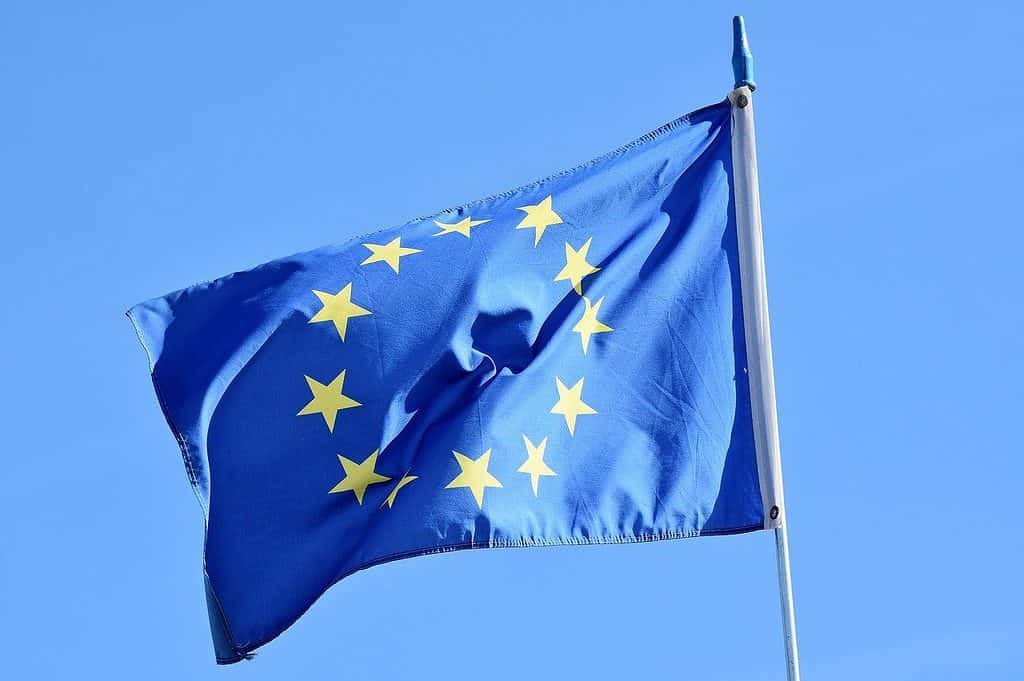
45. The Swiss cantons have existed as such ever since the following dates:
- 1291 – Uri, Schwyz, Obwalden and Nidwalden (both originally Unterwalden)
- 1332 – Luzern
- 1351 – Zürich
- 1352 – Glarus, Zug
- 1353 – Berne
- 1481 – Fribourg, Solothurn
- 1501 – Basel-Stadt and Basel-Landschaft (both originally Basel), Schaffhausen
- 1513 – Appenzell Innerrhoden and Appenzell Ausserrhoden (both originally Appenzell)
- 1803 – St. Gallen, Graubünden, Aargau, Thurgau, Ticino, Vaud
- 1815 – Valais, Neuchâtel (as a monarchy, 1848 as a republic), Genève
- 1979 – Jura (became independent from Berne)
46. The Swiss Armed Forces have traditionally conscripted all men aged 20 or over, though they may join as young as 16 for certain courses. Women can join the army but are not conscripted. Those with physical, mental, emotional, or intellectual difficulties can be exempted from conscription, but non-disabled exempt people have to pay an extra 3% income tax until age 37. Since 1996, conscientious objectors are allowed to pass on military service but have to instead perform civilian service (non-military social services) for half-again as long as armed conscription. As recently as 2013, more than 73% of Swiss people voted to keep the male conscription in place.

47. In 1935, urban development in Switzerland started at an incredible rate. There was more urban development between then and now than there were in the previous two thousand years!
Facts About Swiss Culture
Looking for some Switzerland facts that tell you a little more about day to day life in the country? Swiss culture has so much to offer – and here are some of the most interesting tidbits!
48. More than 25% of those living in Switzerland are actually immigrants from other countries. By far the biggest number of immigrants come from Italy, followed by Germany and then a considerable drop to Portugal. The rest of the top ten, in order, are France, Kosovo, Spain, Turkey, North Macedonia, Serbia, and Austria.
49. There are twelve universities in Switzerland, and they’re all pretty highly rated. Eidgenössische Technische Hochschule (ETH) Zürich is a world-renowned university focusing on engineering and science, ranked 4th for engineering and technology and 1st for marine and earth science.
50. Switzerland has the 20th-lowest unemployment rate globally as of 2022, at 4.9%.
51. There’s no official state religion in Switzerland, though several of the cantons have an official church they recognise above others. About 70% are Christian, with a divide of about 35% Catholics and 25% Swiss Protestants, and the rest in other denominations. About 28% of people are unaffiliated with religion (a giant growth over 40 years, as in 1980, this number was only 4%).

52. Switzerland is considered one of the least corrupt countries globally according to the Corruption Percentage Index (CPI), which measures public sector corruption.
Facts About Swiss Food
Other than chocolate, Switzerland has a lot of fascinating food and drink to talk about! After all, the 26 cantons in the federation each have their unique cultures, which brings some amazing mouthwatering treats.
53 Swiss people love cheese – in fact, the average person eats 22kg per year. Gruyère cheese isn’t only one of Switzerland’s most famous products. It’s also an official part of Swiss National Heritage.

54. Switzerland is known for its wine, and no wonder – there are over 250 different grape varieties in the country. The biggest wine-producing canton is Valais, which produces more than 50 of these grape varieties!

55. Muesli (cold oatmeal/porridge usually eaten for breakfast worldwide) was invented in 1900 by Dr Maximilian Bircher-Benner, who made it to feed people in hospitals. In Switzerland, it is often eaten as a supper meal served with milk, coffee, bread, butter, and jam.
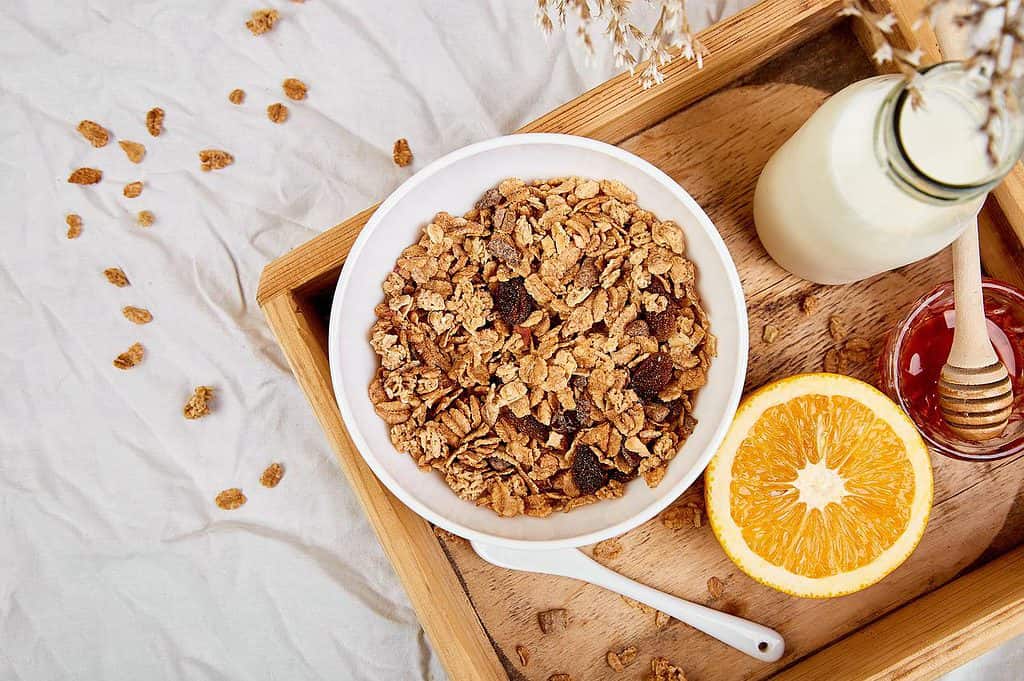
56. Ovaltine (or ovalmaltine) was invented 118 years ago in Berne, Switzerland. It is made of malt and whey, and outside of Switzerland, it generally has sugar and/or cocoa too. It’s added to milk to make a hot or cold flavoured drink.
57. Switzerland has a national sausage – the cervelat – that is also made in France and parts of Germany. The exact recipe varies by region but was originally made of animal brains!
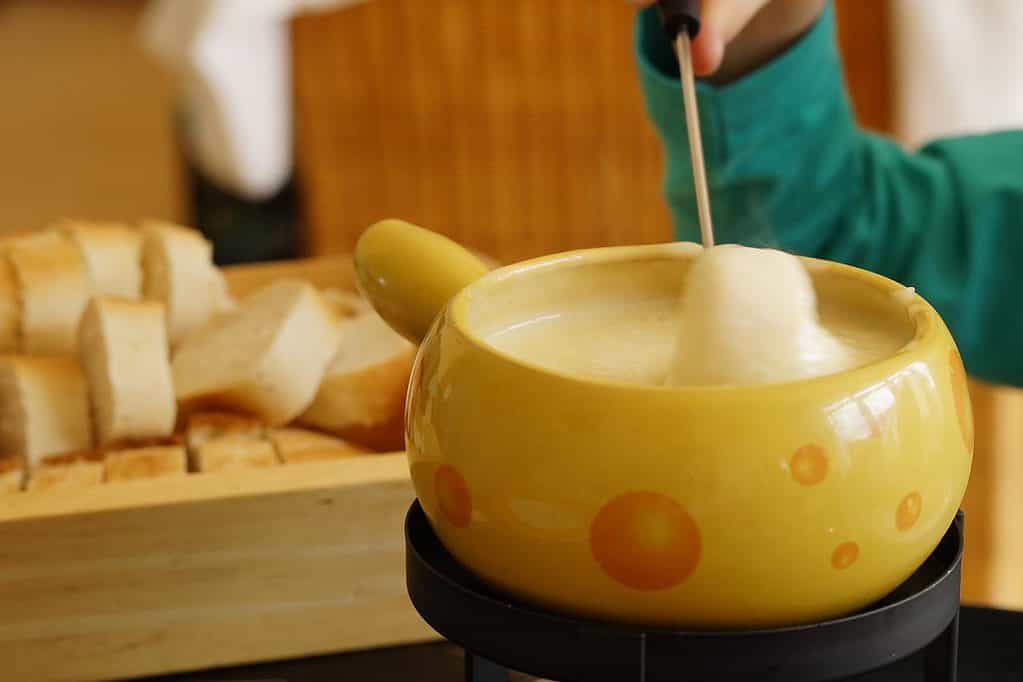
58. Fondue also comes from Switzerland! It’s a delicious pot of melted cheese that you dip bread in to make a simple but tasty snack. The term now refers to other similar dishes, especially chocolate fountains.
49. Sautéed or shallow-friend rösti are especially popular amongst farmers in Berne. They’re traditionally eaten in German-speaking Switzerland, but now they’re eaten all over the country and the world. They’re usually served as a side dish and many Swiss people see them as national food.
50. Italian cuisine is very popular in modern Switzerland, especially pizza and pasta. These are often topped with veal and Swiss cheeses for a local twist.
51. The meringue originated in Switzerland – a seemingly simple dessert made of just egg whites and sugar that is actually extremely hard to get right. The perfect meringue is crispy on the outside and airy-chewy on the inside.
52. Malakoff are fried cheese balls a little similar to round mozzarella sticks. They were created by Swiss mercenaries during the Battle of Malakoff in 1855 and are very popular in Western Switzerland on the shores of Lake Geneva.
53. Zürcher Geschnetzeltes are thin strips of veal sautéed quickly with butter and hot onion before being cooked in a white wine reduction with some other ingredients. They’re often served with rösti.
54. Switzerland is the seventh-biggest coffee consumer in the world, with each person drinking an average of 17.4lbs a year!
55. Cordon Bleu is chicken meat wrapped around cheese and then fried into a schnitzel. Its name comes from the sashes that knights used to wear and is now considered a standard of very high cooking.
56. With 120, Switzerland has the 10th most Michelin starred restaurants globally, and the 3rd highest Michelin starred restaurants per resident.
57. Lagers are the most popular beer in Switzerland, and beer is considerably less popular than wine. That being said, beer is still the second most popular alcoholic drink after wine!
Geneva Facts

These fun facts are about one of the most well-known cities in Switzerland, home to the Geneva Convention and the capital of the Geneva region.
58. Geneva is the second most populated city in Switzerland and the first most populated in Romandy, the French-speaking part of Western Switzerland.
59. The headquarters of many United Nations organisations and the Red Cross headquarters are located in the city.
60. Geneva is ranked the ninth most important financial centre globally and the fifth most important in Europe!
61. It’s also ranked the tenth most livable city with high quality of life in the world.
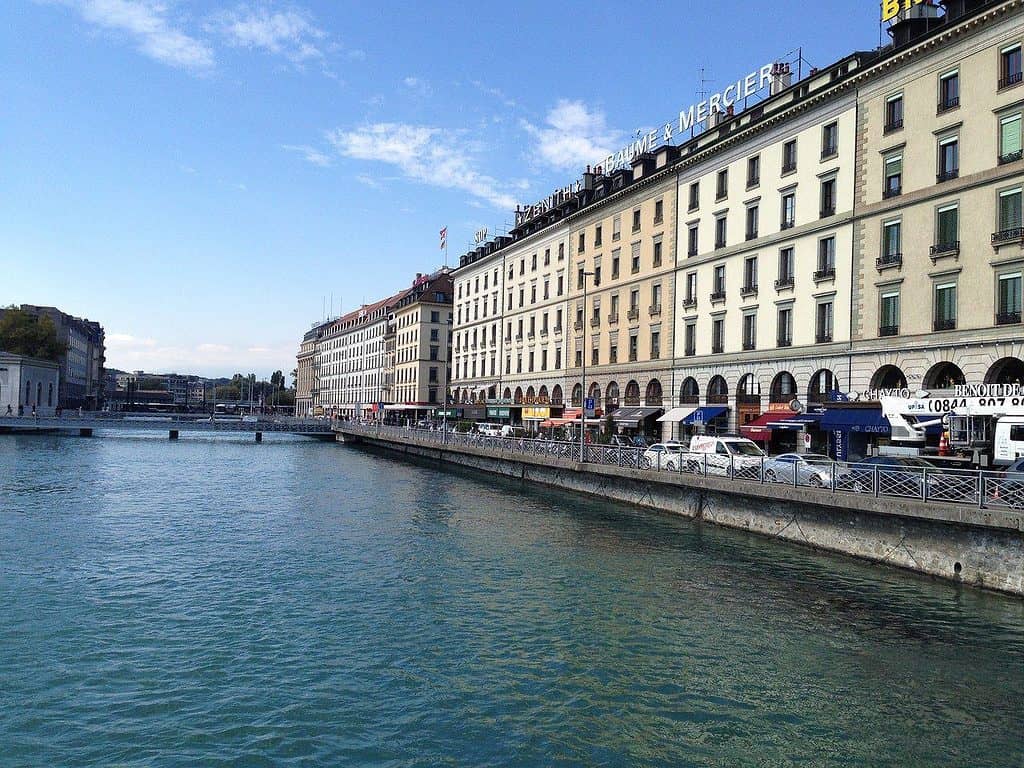
62. It is nicknamed the Peace Capital.
63. A specific chestnut tree in the city has been considered the harbinger of springtime since 1818. The day of the first bud is usually released in the press and is the unofficial first day of the season.
64. Ice hockey is Geneva’s most popular sport!
65. Geneva Airport is connected to the city by the Geneva Airport railway system, which also links to other national rails as well as Paris, Lyon, and other French cities.
66. Most of the canton is covered by the same public transport that operates around the city centre, making it relatively easy to move around. However, it’s hard to find taxis, and when you do, they might not take children and babies!
67. John Calvin, Marc-Théodore Bourrit, Phillip Arditti, and Kate Burton are all famous names born in Geneva.
68. Ian Fleming, the writer of James Bond, studied in Geneva!
69. French is the official language of Geneva. Though not an official language of Switzerland, English is also very popular because of the number of English-speaking immigrants.
70. The average price for a house in Geneva is 2,900,000 francs or 2,375,803 GBP. The average price in London is 514,000 GBP.
71. There are 82 national heritage sites in Geneva. These include religious buildings, museums, theatres, civic buildings, cultural sites, archaeological sites, and international organisations.
72. Geneva is the biggest media centre in all of French-speaking Switzerland
Bern Facts

These interesting facts are all about the official capital of Switzerland, interchangeably spelt Bern and Berne. It’s also the capital of the Bern region.
73. Bern is only the fifth-most populated city in Switzerland, despite being its capital city.
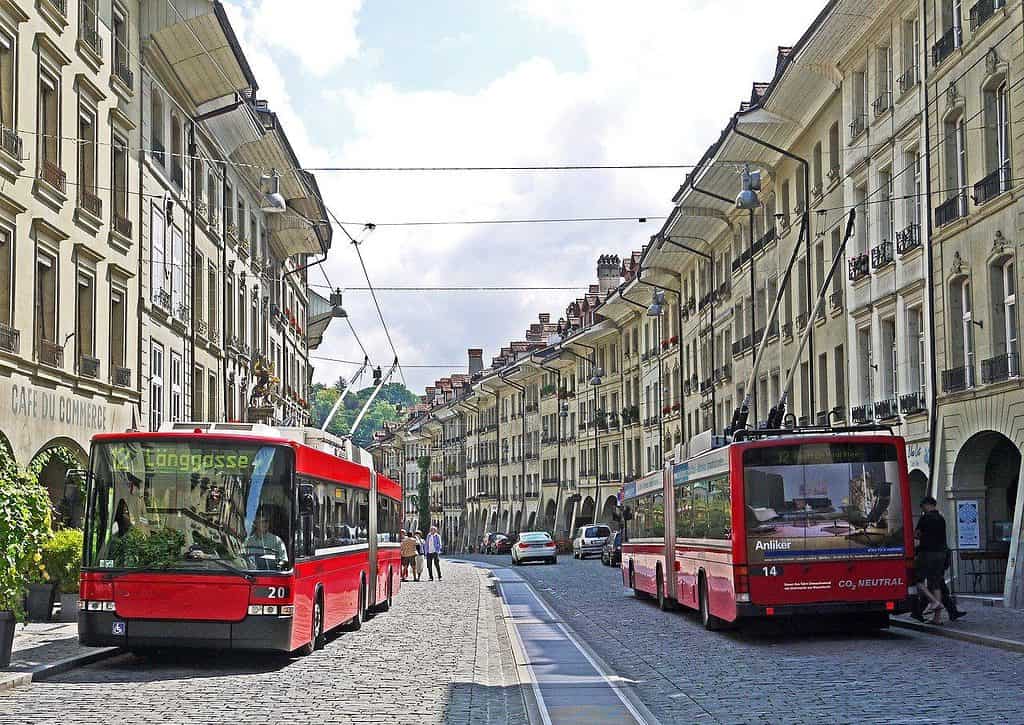
74. The canton of Bern is the second-most populated canton.
75. German is the city’s official language, though most people speak a Swiss-German variant.
76. The city has a very medieval structure, and the city centre is a recognised UNESCO World Heritage Site for its architecture and history.
77. Albert Einstein lived in Bern for two years (1903 to 1905), and it was there that he wrote and published the Annus Mirabilis papers, which included his famous equation: E=mc2:

78. The herald of Bern is the bear, and from 1513 until 2009, four bears were kept in the Bärengraben or the bear pit in the city. Nowadays, the bear pit is used as a connecting tunnel, while the bears are kept in a nearby open-air enclosure.
79. Bern is home to the Universal Postal Union.
80. There are 114 national heritage sites in Bern, including several museums and cultural centres.
81. The Zibelemärit (onion festival) is an annual city fair held every November on the fourth Monday of the month. It ends with children having a confetti battle!
82. Though there is an airport in Bern, it doesn’t really serve commercial flights, instead of operating civil flights and private charters.
Basel Facts

These facts about the city of Basel, also known as Basle, Bâle, and Basilea. It’s the capital of the canton of Basel-Stadt.
83. Basel is in northwest Switzerland, located by the Rhine, right on the borders of both France and Germany
84. The official language of Basel is Swiss German, but most people actually speak a local Basel dialect
85. Basel is known for its many impressive museums, including the Kunstmuseum, the first art collection accessible to the public in the world when it opened in 1661.
86. It’s the third most populous city in Switzerland.
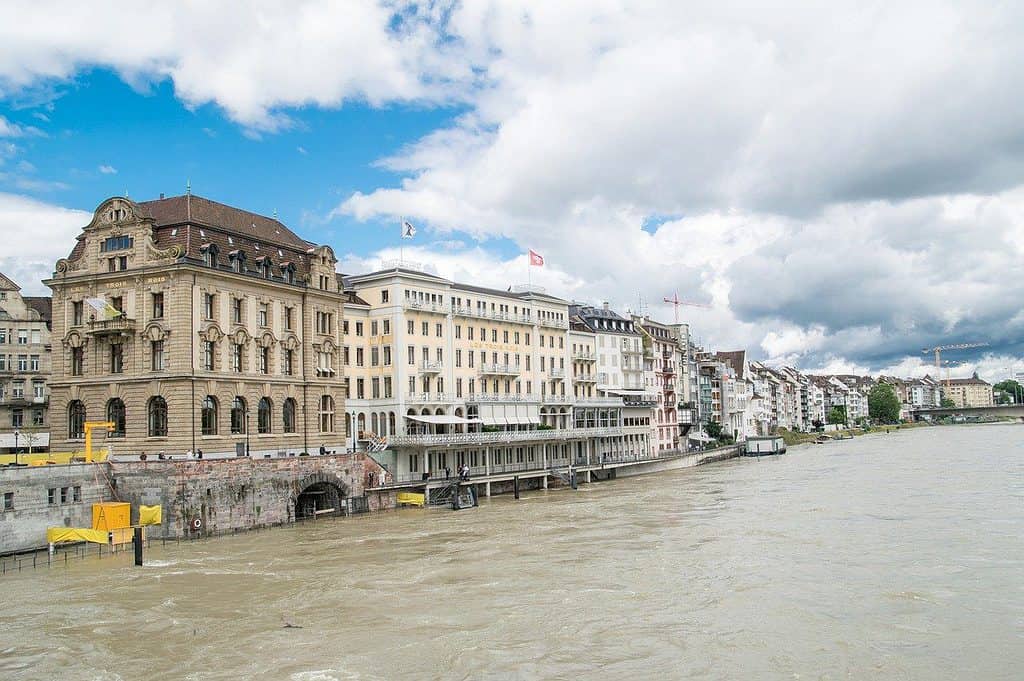
87. The University of Basel, founded in 1460, is the oldest university in Switzerland and has traditionally made the city a political safe haven.
88. As well as a quarter of people being Catholic and another 23% being Swiss reform, Basel also has a small but significant Jewish population. The Jewish Museum of Switzerland is located in the city.
89. Basel is a sister city to Shanghai, China, and Miami Beach, USA, and a twin of the US state of Massachusetts. Rotterdam in the Netherlands is Basel’s partner city.
90. More than 35% of the population of Basel are actually foreign nationals, mostly Germans, followed by Italians and Turks.
91. Switzerland’s only cargo port is located in Basel, which routes goods through the Rhine and connects to the ocean at Rotterdam.
92. Basel’s airport, EuroAirport Basel Mulhouse Freiburg, is actually located 100% on French land! It’s architecturally split between a French and Swiss side.
Lucerne Facts

93. The central Swiss city of Lucerne is the capital of the canton of the same name and has its own fascinating culture.
94. Lucerne is the most populous city in Central Switzerland and is an extremely popular destination for tourists due to the nearby Lake Lucerne.
95. The official language of Lucerne is German, though most people speak in the Lucerne dialect of Swiss German.
96. 25% of Lucerne’s population is made up of foreign nationals, most of whom are German, followed by Italians and Portuguese people.
97. Lucerne is a big centre for alternative culture in Switzerland, especially musically, though it is also a great favourite of established cultural museums and plays.

98. Swiss Carnival, known as Fasnacht, happens in Lucerne at the end of every winter. It’s a huge outdoor party with singing, dancing, costumes, and more!
View our full Lucerne city break guide here >>
Lugano Facts
The largest city, though not the capital, of the Ticino district, Lugano has much to offer for those looking for interesting facts about Switzerland.
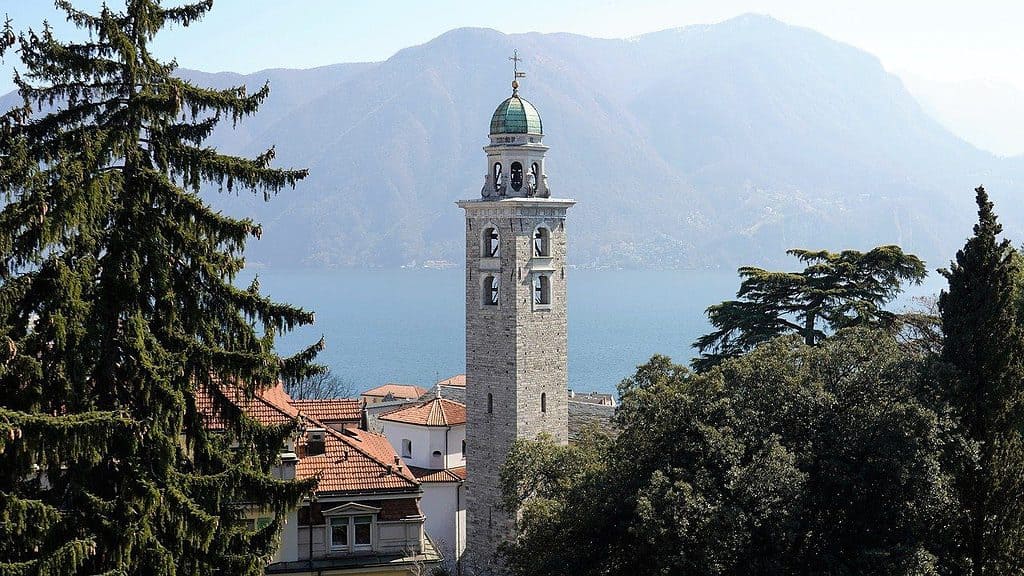
99. The city is located on Lake Lugano and is surrounded by mountains as well as international borders with Italy.
100. It’s the ninth-largest city in Switzerland.
101. Over 80% of the city’s population speak Italian as their first language.
102. It’s one of Switzerland’s most popular tourist destinations due to its cultural centres, architecture, and the surrounding beautiful natural sights.
103. Lugano Airport is only serviced by a small Czech airline called Silver Air. The nearby airports of Milan serve the city on a much wider international scale as they’re just across the border.
Zurich Facts
The other most famous city and the one many people mistake for the capital, no list of Switzerland facts for kids would be complete without a rundown of Zürich, the capital of the canton of the same name.
104. The official language of Zürich is German, but most people speak a local Zürich version of Swiss German in everyday life
105. It is the largest city in Switzerland

106. It was founded by the Ancient Romans 2,000 years ago and has been populated ever since. Its Roman name was Turicum.
107. Despite a relatively small population, Zürich is one of the world’s most important financial centres.
108. The city has two sister cities – Kunming (Yunnan-Fu), China, and San Francisco, USA.
109. 32% of the Zürich population are foreign nationals. Most are German, followed by Italians, Portuguese, and Spanish.
110. The oldest and largest synagogue in Synagoge Zürich Löwenstrasse, is a cultural, national heritage site. A steady 1% of the population is Jewish, a number that’s been relatively the same since the 1970s.
111. According to fDi Magazine, Zürich is 16th amongst the future Global Cities and 2nd when only considering medium and small cities.
112. There are around 260 animal species and 2,200 individual animals in the city’s zoo, including many big cats like various leopards.
113. There are a number of prehistoric protected dwellings in and around the city which are UNESCO World Heritage Site.
Swiss Alps Facts
We’ve already talked quite a bit about the Swiss Alps – and how could we not, when they’re some of the country’s most iconic images? These are some more fun facts to keep your curiosity sated!
114. In the national languages of Switzerland, the Swiss Alps are called Schweizer Alpen (German), Alpes suisses (French), Alpi svizzere (Italian), and Alps svizras, Romansh)
115. Almost all of the highest mountains in all the Alps are part of the Swiss Alps! However, the highest point in all of the Alps, Monte Bianco / Mont Blanc, is actually on the border of France and Italy.

116 The first alpine national park was the Swiss National Park in Graubünden, which opened in 1914. The largest protected area in Switzerland is Parc Ela (opened in 2006), and the Jungfrau-Aletsch Protected Area (2001) is the first World Heritage Site in the Alps.
117. There are three different climate zones in the Swiss Alps. These are:
- The Subalpine Zone – where most human settlements are, below the tree line.
- The Alpine Zone – above the tree line, often used as pastures.
- The Glacial Zone – highest area, filled with permanent ice and snow.
118. Skiing and other winter sports are very popular in the Swiss Alps, usually based in the areas of Valais, Bernese Oberland and Graubünden. The ski season runs from November to May.
119. Switzerland is generating hydroelectricity from the Swiss Alps as a way to power much of the country as they phase out nuclear technology.
120. The first mountain climbed by explorers in the Swiss Alps was Jungfrau in 1811. Since then, the main peaks have gained a lot of tourism, mostly British mountain climbers who hire locals to help guide them.
121. Several nature trails are popular with tourists in the summer, and many aerial tramways make the large winter resorts popular even during the off-season of summer.
122. There’s a huge transport network through and over the Swiss Alps, mostly by railway.
123. The ten highest mountains in the Swiss Alps are, in order: Dufourspitze (Monte Rosa), Dom, Liskamm, Weisshorn, Täschhorn, Matterhorn, Dent Blanch, Jungfrau, Klein Matterhorn, and Finsteraarhorn.
Switzerland Trivia Questions
In what language is Switzerland known as Confoederatio Helvetica?
What is the name of the highest peak of the Swiss Alps?
What percentage of the Alps are in Switzerland?
How much chocolate does the average Swiss adult eat per year?
What is the capital of Switzerland?
What are the 26 cantons of Switzerland?
When did the modern confederation of Switzerland start?
How many people who live in Switzerland are foreign nationals (estimated percentage?)
What are the national languages of Switzerland?
What is the biggest city in the country?
What is the capital of the country?
How much coffee do Swiss adults drink per year on average?
What happens on Sundays in Switzerland?
What makes the flag of Switzerland different from almost all other flags?
What wearable item is Switzerland most famous for?
What countries border Switzerland?
What river connects the cargo port to the ocean waters in Rotterdam?
What is CERN?
How many people live in Switzerland?
What is the Red Cross?
More Facts About Europe
More on Switzerland
Lucerne to Geneva: How to Get There
EXACTLY How to Get from Zurich to Lucerne
Sylvie Simpson is the founder of European Cities with Kids. For the past 6 years, she has been travelling all over Europe whenever she has the chance, both solo, for work and with her daughter. Sylvie is on a mission to help people make the most of city breaks in Europe with kids and helps over 50,000 readers per month plan and make the most of their trips in Europe with kids.
